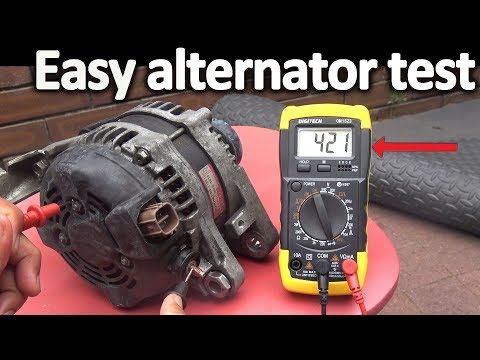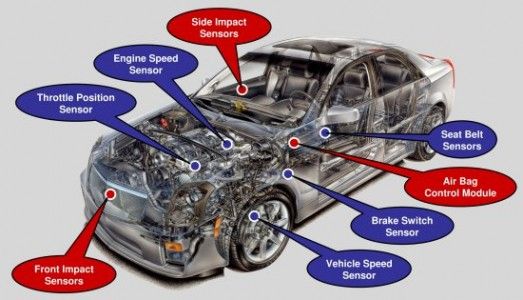
You may have wondered how to become a small engine mechanic. The first step is determining your state's requirements. Each state will have its educational, testing, or practical requirements. Contact your state's professional licensing board or other regulatory body for more information. If you're still unsure, the Penn Foster program provides contact information for state licensing boards, as well as industry licensing information.
EETC Certification
The EETC Technician Training Certification Program gives students a high technical proficiency level and enhances professionalism at dealerships. The tests are based in industry standards, which were created by a committee that includes distributors, manufacturers, as well as dealers. This certification is a proof that students have a strong understanding of small engine repair and maintenance. For those working in retail, the program provides hands-on experience using lawn and garden equipment.

College programs
Getting certified as a small engine mechanic requires specialized training in the field. This course will give you the skills needed to work on various types of engines including gas and diesel. This course emphasizes basic repair and troubleshooting skills. It also includes hands-on and lab experiences. The students will learn how to read and operate electrical test equipment as well to replace and repair electrical components. This course will also cover different parts of your engine, including the starter, alternator and distributor.
Apprenticeships
It is necessary to have small engine mechanics in order to service and repair small engines. Many small machines will need maintenance and tuning. You will be using lawn mowers, snowblowers, weed trimmers and other power equipment. You'll also learn about drive system, such as pulleys/belts, chains, pulleys/gears. Learn about electric systems. This includes starting, charging, safety, and other aspects. During your apprenticeship you will be taught basic electrical principles as well as how to troubleshoot and replace parts.
Online programs
Online training for small engine mechanic certification has many benefits. The best part about online courses is that you can obtain your certification from a trusted institution. Equipment & Engine Training Council certificates, the largest manufacturer small engine parts accessories, are a great way to show your skills. They are a good indicator of your ability to meet the demands of high-demand jobs and provide an accurate representation for employers.

Amra certification
A small engine mechanic can tune and repair the mechanical parts on a variety small engines. These engines can include lawn mowers and snow blowers as well as weed cutters. It is important to learn how to diagnose and fix small engine problems. Troubleshooting and inspection are two other important skills for small engine mechanics. It is also important to be able to use tools and other equipment. A basic understanding of computers and electrical systems is required for small engines.
FAQ
Are you a mechanic or a technician? Can I study part-time?
While a degree is not required, it does help. Employers are more likely to hire candidates who have completed a complete degree. It shows that your efforts have been put in and you have succeeded.
You can still study while working, however. Some universities let students complete their coursework in the summer and then continue their studies during the school year. Other universities permit students to take classes part-time during the school year.
How long is an apprenticeship for an automotive mechanic?
An automotive mechanic apprenticeship takes around three years to complete. The apprenticeship includes two years studying at school and two more as an apprentice. The first year teaches you all aspects, from theory to practical skills and safety procedures. You'll also learn the safe and efficient use of tools during this first year. After the completion of the first year, you will spend another year on the job training. Here you'll gain valuable experience in different trades. You'll have the opportunity to attend formal courses during these periods too.
The final year of this program is spent in obtaining qualifications and becoming certified in your field. These include NVQs or National Vocational Qualifications. These are earned after passing exams that cover specific topics in the industry. There are also HNCs (Higher National Certificates), which cover general subjects like management, business administration, customer service, and more. City & Guilds certificates may be available for those who are interested in becoming qualified in specific trades.
How long does it take to become a good mechanic?
It takes years of practice and experience to become an expert mechanic. The best way to learn how to repair cars is by working under the supervision of a professional mechanic.
You will have to spend time in a garage learning about cars and mechanics. You will need to be familiar with mechanical engineering books about mechanics, car design, and other topics.
Furthermore, you'll need to enroll in auto school.
The most important thing to do is start early. It doesn't matter if you're old or not to study automotive technology. If you want to qualify as a mechanic, get started now!
What can I do to fix my car as an hobby?
Take up a hobby in car repair if you have an interest. You can repair them, buy their parts, sell them, or just have fun with them. If you are looking for something new, this would be a great hobby.
It's difficult to make this a fulltime job. It requires hard work and dedication. It requires a lot investment.
It is best to avoid getting involved in car accidents unless you have good reasons.
What length is an automotive course?
An automotive course lasts for three years.
The first year is spent learning about cars and theory. The second year is spent on practical training where you learn how to drive, fix engines, and do other mechanical jobs around the car. The last year of your training is spent on practical training, where you learn how to fix real-world problems.
Is it hard to get a job working as an auto mechanic?
Yes, it can be very easy. Garages often advertise their jobs online and people just apply because it seems fun. If you want to get your foot in the door, you should try applying for a few places and see if they accept student applications. Alternatively, you could ask friends and family if they know anyone who works in the industry. They may be happy to recommend someone.
What are the qualifications for an automotive technician
High school graduation or GED is required with excellent grades in English and math. It is also necessary to be able both to read and to write. After passing a written test, you will need to complete a series of practical tests before you are allowed to begin working.
Statistics
- There were 749,900 jobs available for automotive service technicians and mechanics in 2016, which is expected to grow by six percent through 2026. (jobhero.com)
- According to the BLS, the median annual salary for automotive service technicians and mechanics in the United States was $44,050 in May 2020. (uti.edu)
- The U.S. Bureau of Labor Statistics (BLS) reports that the job outlook for automotive service technicians and mechanics is expected to decline by 4% from 2019 to 2029. (indeed.com)
External Links
How To
How to properly diagnose and repair your vehicle
You should first examine the symptoms your car is showing to determine if it requires repairs. Next, you can follow these steps in order to diagnose your car.
-
Check engine lights. Inspect the dashboard light indicators. These include the engine lights, the oil pressure gauge and the battery light indicators. The RPM gauge and coolant temperature gauge should also be checked. If any of them have been flashing for several days, it may mean something is wrong with your vehicle.
-
Check the treads of your tires. Tire wear can lead to problems in handling and brake performance. You should inspect the treads on your wheel. You should ensure that they are clean and smooth. You can do this by taking off the wheels. To check the condition of your treads, use a flashlight.
-
Check the level of brake fluid. You must always monitor the level of your brake fluid. This ensures that your brakes work properly. Low brake fluid levels could cause your brakes to fail when you apply pressure.
-
Make sure to test the suspension system. Vehicles usually have a suspension system that helps absorb shocks and vibrations while driving. It allows for better control, smooth acceleration, and deceleration. You might notice a wobbly feeling or uncontrollable shaking in your vehicle if it has a problem with its suspension. If you are unsure if your vehicle is suffering from a suspension problem, put weight on the front and rear axles to check the movement.
-
Take a look at the steering column. The steering column is used to link the steering wheel with the rest of vehicle's components. The steering column can often be damaged by an accident. You should replace your steering column if it feels loose or unstable.
-
Observe the exhaust pipes. The exhaust pipes transport gases from the combustion chamber to outside. Exhaust pipes that are cracked or leaking can allow harmful fumes to enter your cabin. Also, if your tailpipe is bent, you should fix it immediately.
-
Look under your hood. Take a look underneath the hood to find any strange or unusual items. Fluids could be leaking from your engine. If you smell something strange coming from your engine compartment you should call a professional technician.
-
It is important to inspect the air filter. The vehicle's outside environment may cause the air filter to collect dust and debris. A dirty air filter causes your vehicle to run poorly. Replace your air filter regularly.
-
Make sure you check the fan belt. Your vehicle's fanbel is what connects the engine and the transmission. If the fan belt is damaged, the engine won’t turn. Replacing the belt is simple. All you need to replace the belt is a screwdriver with pliers.
-
Make sure you inspect the radiator hoses and hoses. The radiator hose is used to carry water from the radiator to your engine. It can become cracked or damaged and leak hot liquid onto your engine. You only need a pair of needle-nose pliers and a small wire brush to repair the hose.
-
Be sure to inspect your windshield wipers. Windshield wipers use electricity to clean away snow and rain. They can leave streaks on your windows glass if they stop working. The solution is to change the washer fluid.
-
Check the battery cables. The batteries provide power to the electrical systems within your car. Make sure you disconnect the negative cable before replacing batteries. Failure to do so can damage your alternator.
-
Check the headlights. The headlights provide illumination for the road ahead. They can make it difficult to see if they stop working. To determine if your bulbs are out of date, check them.
-
Check the lights. When you approach them at night, the lights warn other drivers. It could cause distraction and even lead to an accident if it doesn't work.
-
Make sure you check your brakes. Before you collide with another vehicle, brakes will slow down the car. You may lose control of your vehicle and crash if the brakes don't function properly.
-
Change the oil. Oil keeps your engine lubricated. It protects metal parts and prevents them from wearing too quickly. It is recommended that the oil be changed every other month.